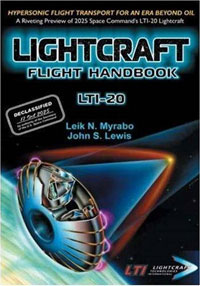
Capsule reviewsby Jeff Foust
|
| It is a combination of an astronomy book, providing information about these observatories and the science they do, and a travel book, with practical tips regarding how to visit them. |
The book features eight observatories, from the famous (Palomar, Lowell) to the more obscure (Sacramento Peak in New Mexico). Like a road-tripping astronomer, the book works its way west to east, starting at Palomar and working its way east to McDonald Observatory in west Texas, before swinging back to Mount Graham in Arizona in the book’s final chapter. The chapters generally take the same approach: an introduction to and history of the observatory, visitor and educator information, an interview with an astronomer who uses that observatory, and a “science highight” about research done at that observatory. (An exception is the Mount Graham chapter, which omits the interview and science highlight sections; that, and its location in the book, give it the feel of something hastily tacked on to the end.)
Observatories of the Southwest is a combination of an astronomy book, providing information about these observatories and the science they do, and a travel book, with practical tips regarding how to visit them. That combination works out well: while you may not learn a lot if you’re already familiar with these telescopes and the current state of astronomy research, the book may, if nothing else, inspire some plans for future vacations in the Southwest.
 |
Lightcraft Flight Handbook LTI-20
by Leik N. Myrabo and John S. Lewis
Apogee Books, 2009
softcover, 304 pp., illus.
ISBN 978-1-926592-03-9
US$29.95
One technique authors have used to try and describe current or future space plans has been faux technical manuals. Perhaps the best-known example of this approach was the Space Shuttle Operator’s Manual from the early 1980s, followed by Ben Bova’s Welcome to Moonbase, a manual for new arrivals at a lunar base circa 2020, in the late 1980s. That such an approach would find fans is surprising, given that in the real world technical manuals and employee handbooks are among the most boring types of books around. Attempting to follow in the path blazed by those books is Lightcraft Flight Handbook LTI-20.
| That such an approach would find fans is surprising, given that in the real world technical manuals and employee handbooks are among the most boring types of books around. |
The book is written as a declassified technical manual from 2025 for a “lightcraft”, a spacecraft propelled by beamed energy of the type studied for many years by RPI professor Leik Myrabo, one of the authors of the manual. The book goes into great technical detail about how the lightcraft would operate, including everything from propulsion technology to life support and escape systems, based in part on the research Myrabo and his students have put into the concept over the years. To keep up the appearance as a declassified military manual, whole chapters on remote sensing and planetary defense capabilities of the lightcraft are “removed” as being still classified.
The book is a relatively dense read, as you might expect from a technical manual. (In a two-page forward where Myrabo and co-author John Lewis “step out of character”, so to speak, they explain that they use the technical manual approach “to convey a technically accurate understanding of the structure and operation of this highly innovative and unfamiliar new technology in a visually engaging and interesting manner.”) However, this approach is probably a little too technical for those people who are wholly unfamiliar with the lightcraft concept, who would benefit from a more general introduction to the concept—one that doesn’t read like a technical manual.